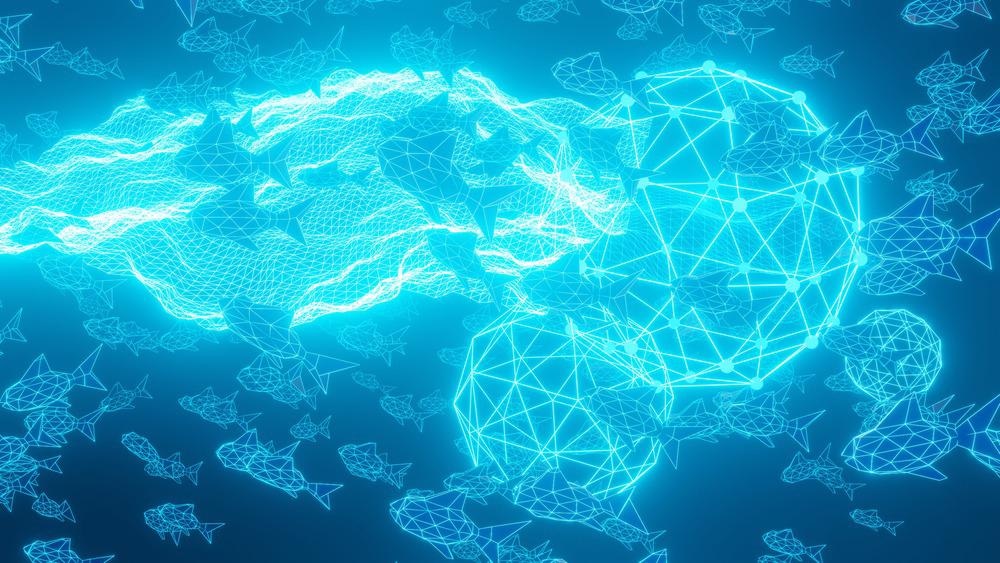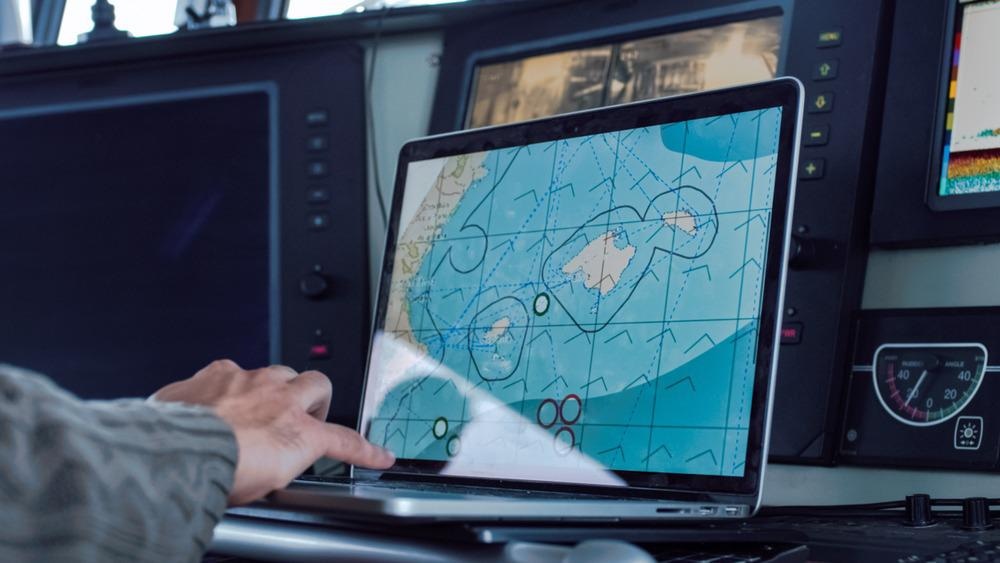The recent 2021 Intergovernmental Panel on Climate Change (IPCC) report states that it is 'unequivocal that human influence has warmed the atmosphere, ocean and land' and that this, in turn, has led to 'widespread and rapid changes'.
Critical areas for concern in oceanic conditions highlighted by the IPCC include heating of the upper ocean regions, increased acidity, and deoxygenation. The implications for marine life are stark, as are the indirect consequences for communities and ecosystems that are dependent on these species.2 Many of these issues were outlined in the original IPCC 2018 report but have become much more severe with the results of limited intervention efforts.
Mitigating the potential effects of climate change means predicting the outcomes of these changes or understanding the 'feedback cycles' that need to be curbed to prevent more disastrous outcomes. OcéanIA is the work of an international consortium of researchers developing new mathematical tools and artificial intelligence approaches to understand and predict the effects of climate change.

Image Credit: atdigit/Shutterstock.com
How does OcéanIA Work?
The overall goal of OcéanIA is to create a 'virtuous cycle' where OcéanIA provides novel solutions to known questions. New artificial intelligence tools will also prompt new scientific questions for further research. These can then be addressed by acquiring new data on the oceans and climate change to challenge the current state-of-the-art understanding to complete this cycle.
One of the key machine learning approaches used as part of this work is neural networks. Neural networks are networks of mathematical functions, each of which can be considered a 'learning unit'; a model is trained on test datasets, and then each of these learning units can learn independently, sharing and influencing other units in the network.
OcéanIA is attempting to improve how neural networks handle graph-structured data. There are many varieties of graph structures, and structures of this type will describe any dataset that is non-linear. This includes nearly all realistic systems, from ocean currents to consumer behavior, where a model that captures their true complexity is desired.
Key Challenges to Overcome of AI and Ocean Monitoring
Current mathematical and computational tools are insufficient to deal with the availability and types of datasets available for marine systems. This includes high computational costs of many models and limited capabilities for handling structured information. A lack of knowledge and datasets is also an issue as many phenomena can be difficult to measure experimentally, and there is not always a long historical record to base learning from.
Many machine learning processes are 'black box', so it is often impossible to interpret the learning process and gain insights into the underlying physics of the phenomena being studied. Preventing and mitigating climate change means understanding the physical phenomena behind these changes is essential, which is why neural networks have been chosen as the main approach in the project.
The achievements of OcéanIA will be in the development of new advanced modeling tools and geared towards specific ecological questions. For example, this involves developing our understanding of the patterns in plankton taxa and how they will be impacted by climate change, and how the ocean capacity as a carbon sink will be impacted.

Image Credit: Gorodenkoff/Shutterstock.com
OcéanIA and Industrial Applications
One of the reasons machine learning and other artificial intelligence processes have become so widespread is their versatility. Even seemingly unrelated problems such as dynamic pricing involve comprehending a complex, non-linear system, which bears some similarity to what OcéanIA is trying to solve.
Industries dependent on the ocean, particularly marine organisms such as the fishing industry, will benefit greatly from the predictive capabilities of OcéanIA. Climate change will undoubtedly disrupt biodiversity and ocean food chains, which is why OcéanIA is focusing on understanding how one of the species at the bottom of them, plankton, will behave. Changing migratory patterns of marine life may require modification of fishing seasons and locations and human adaption to cope with the changing availability of particular species.
Changes in sea levels and salinity has many implications for marine engineering and facilities such as desalination plants that make use of ocean water. The membranes used in many desalination facilities for the production of drinking water are costly and easily damaged by chemicals used for purification or acidic conditions, prompting the need for alternative materials. Engineering solutions for flood defenses to cope with changing currents and tidal patterns will also be essential.
Using AI to Explore Oceans
Video Credit: MIT Mechanical Engineering/YouTube.com
A Look to the Future
One of the most concerning observations from recent studies has been changes in ocean transport systems' behavior like the Atlantic Meridional Overturning Circulation. There are fears that this current system is close to a 'critical transition', where further changes will push it into regions of volatile behavior. Systems like this will be critical targets for predictions from OcéanIA as well as targeted involvement for an industry looking to mitigate potential destructive effects.
--
Industrial Response to Climate Change
This article is a part of the IPCC Editorial Series: Industrial Response to Climate Change, a collection of content exploring how different sectors are responding to issues highlighted within the IPCC 2018 and 2021 reports. Here, Robotics showcases the research institutions, industrial organizations, and innovative technologies driving adaptive solutions to mitigate climate change.
References and Further Reading
IPCC. (2018) Summary for Policymakers. Global Warming of 1.5°C. An IPCC Special Report on the impacts of global warming of 1.5°C above pre-industrial levels and related global greenhouse gas emission pathways, in the context of strengthening the global response to the threat of climate change, sustainable development, and efforts to eradicate poverty. Available at: https://www.ipcc.ch/
Doney, S. C., Busch, D. S., Cooley, S. R., & Kroeker, K. J. (2020) The impacts of ocean acidification on marine ecosystems and reliant human communities. Annual Review of Environment and Resources, 45, 83–112. Available at: https://doi.org/10.1146/annurev-environ-012320-083019
IPCC. (2021) Summary for Policymakers. Climate Change 2021: The Physical Science Basis. Contribution of Working Group I to the Sixth Assessment Report of the Intergovernmental Panel on Climate. Available at: https://www.ipcc.ch/report/ar6/wg1/downloads/report/IPCC_AR6_WGI_SPM.pdf
Sanchez-Pi, N., et al. (2021) OcéanIA: AI, Data, and Models for Understanding the Ocean and Climate Change. [online] Hal.archives-ouvertes.fr. Available at: https://hal.archives-ouvertes.fr/hal-03274323v1
Myronchuk, V., Zmievskii, Y., Dzyazko, Y., Rozhdestvenska, L., & Zakharov, V. (2018) Whey desalination using polymer and inorganic membranes: Operation conditions. Acta periodica technologica, (49), 103-115. Available at: http://dx.doi.org/10.2298/APT1849103M
Boers, N. (2021) Observation-based early-warning signals for a collapse of the Atlantic Meridional Overturning Circulation. Nature Climate Change, 11(8), 680–688.Available at: https://doi.org/10.1038/s41558-021-01097-4
Disclaimer: The views expressed here are those of the author expressed in their private capacity and do not necessarily represent the views of AZoM.com Limited T/A AZoNetwork the owner and operator of this website. This disclaimer forms part of the Terms and conditions of use of this website.